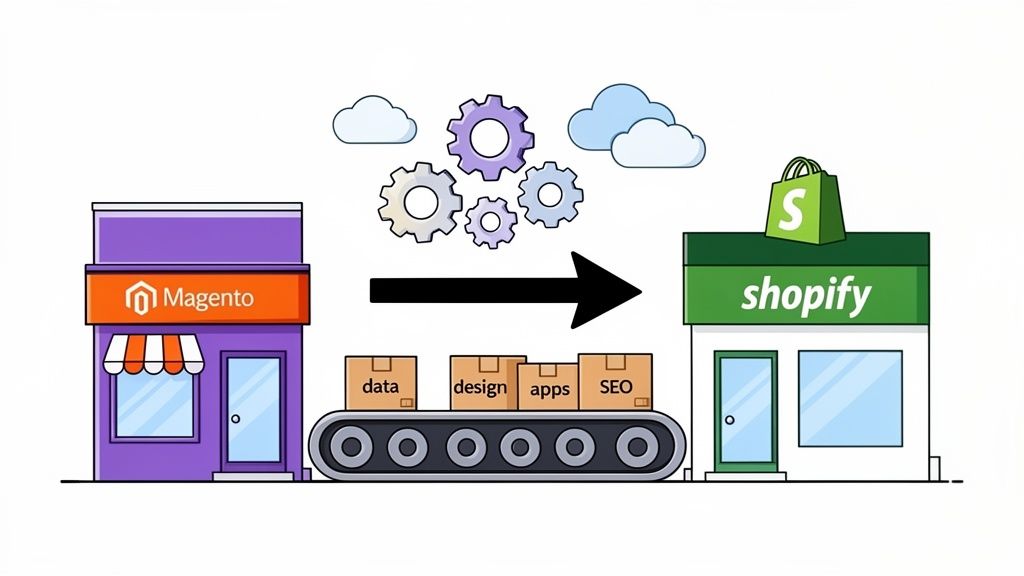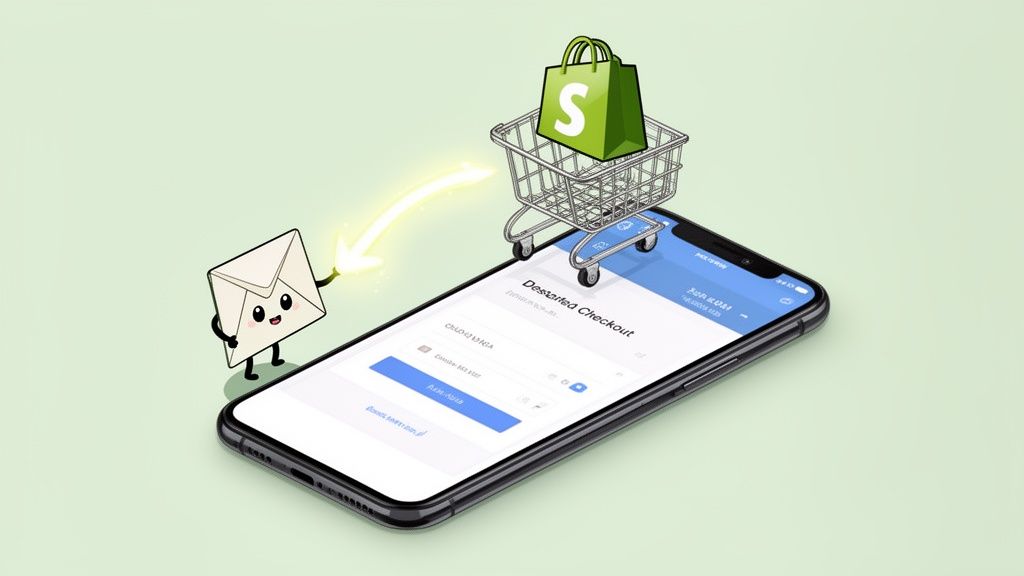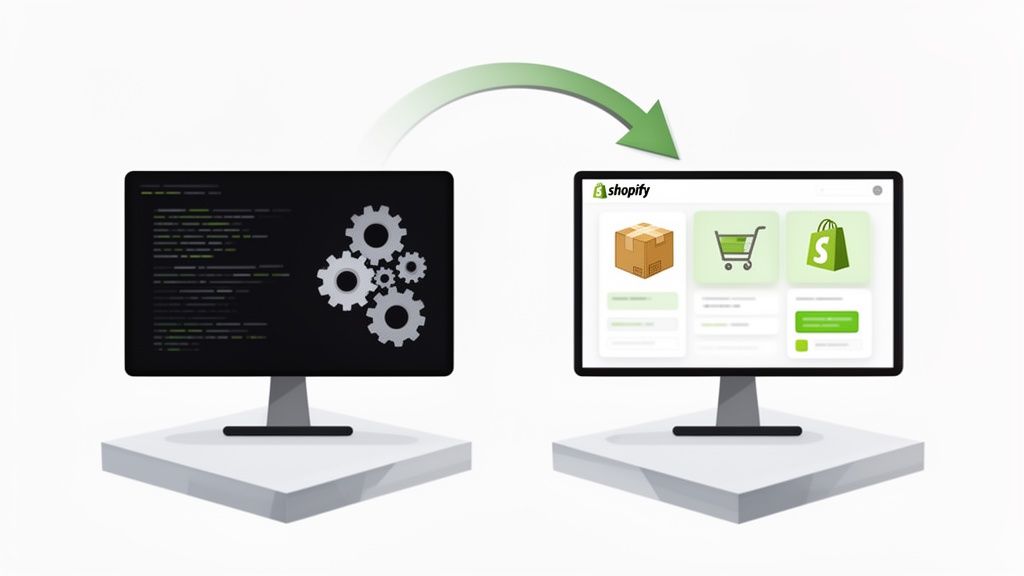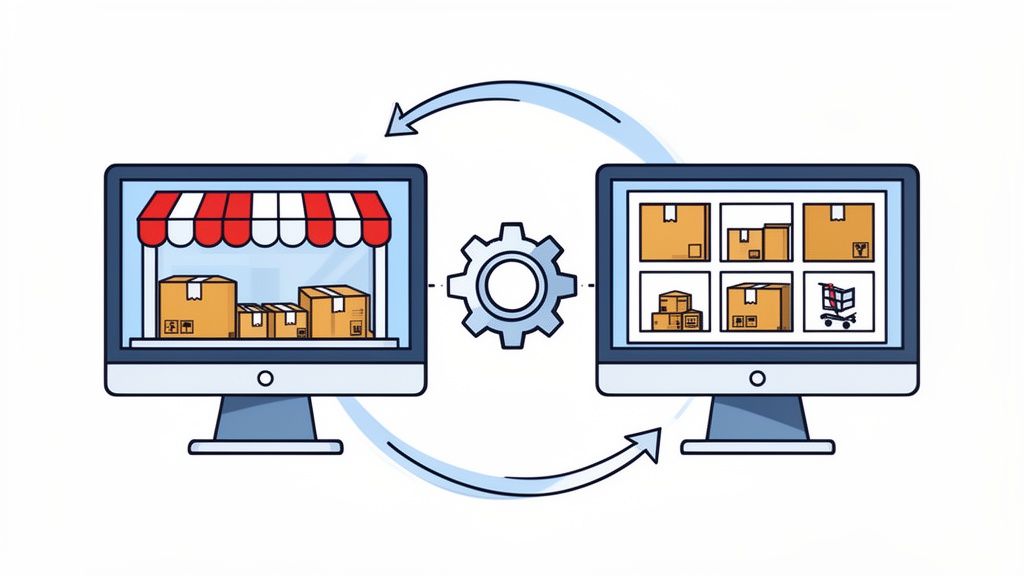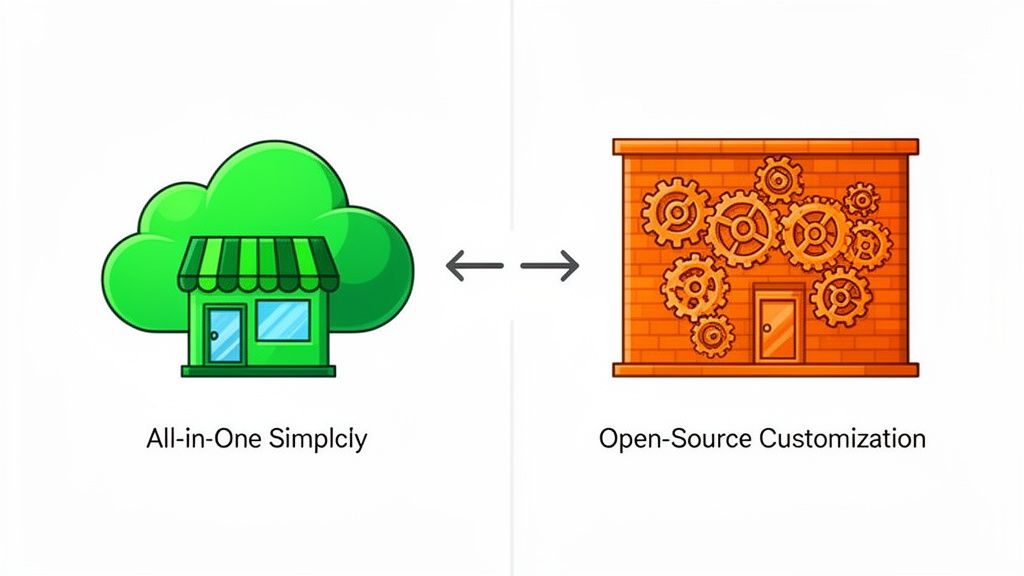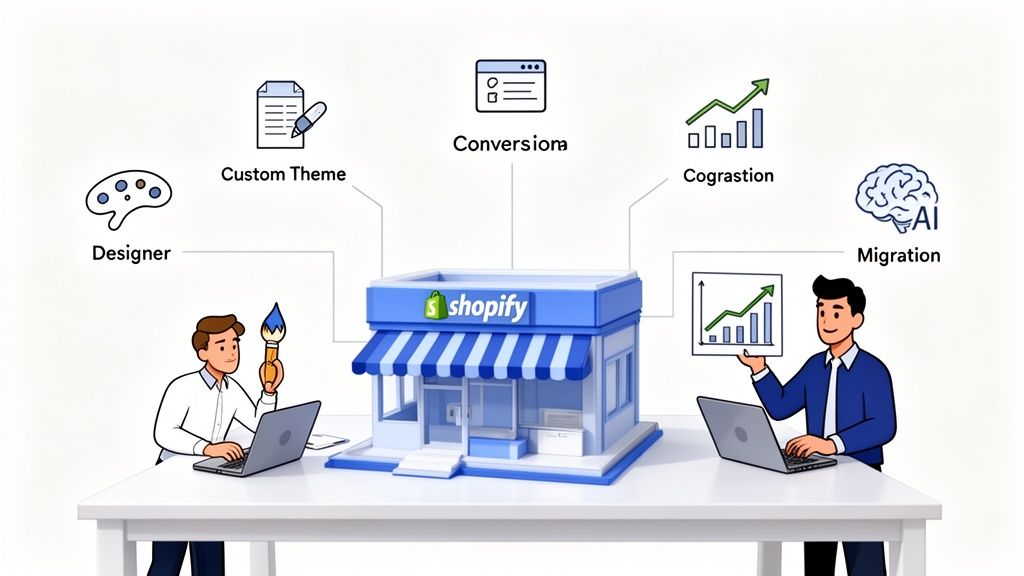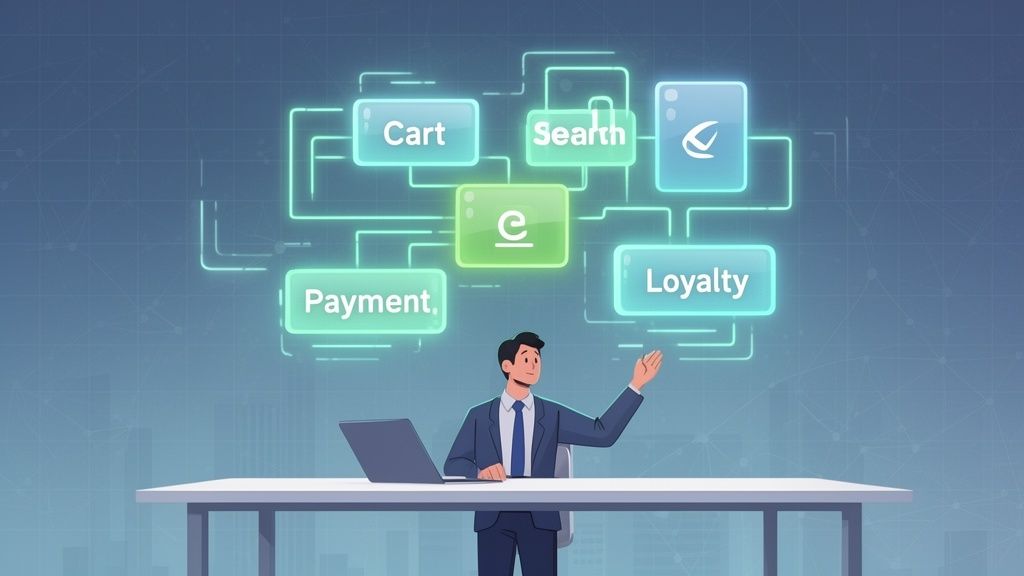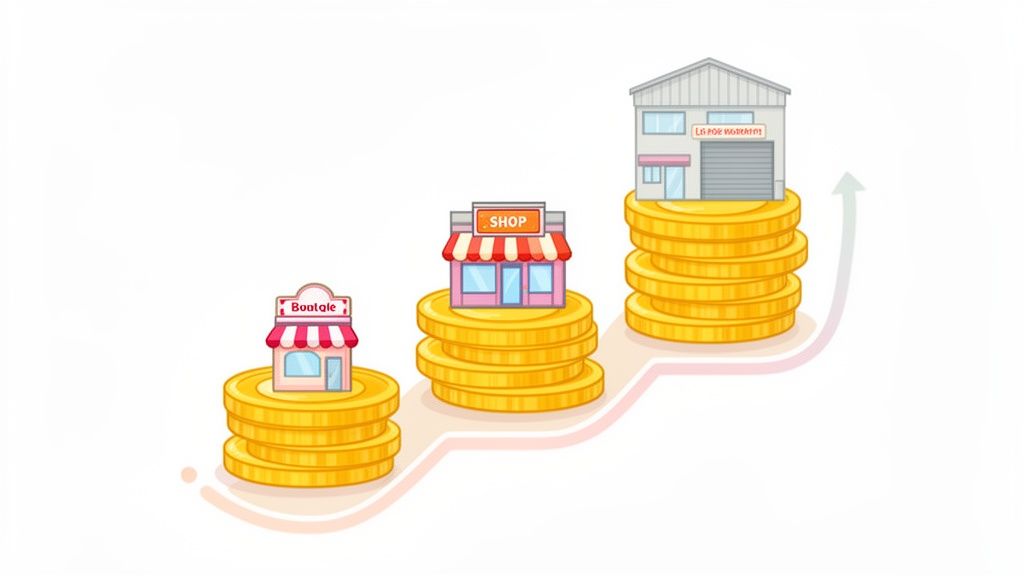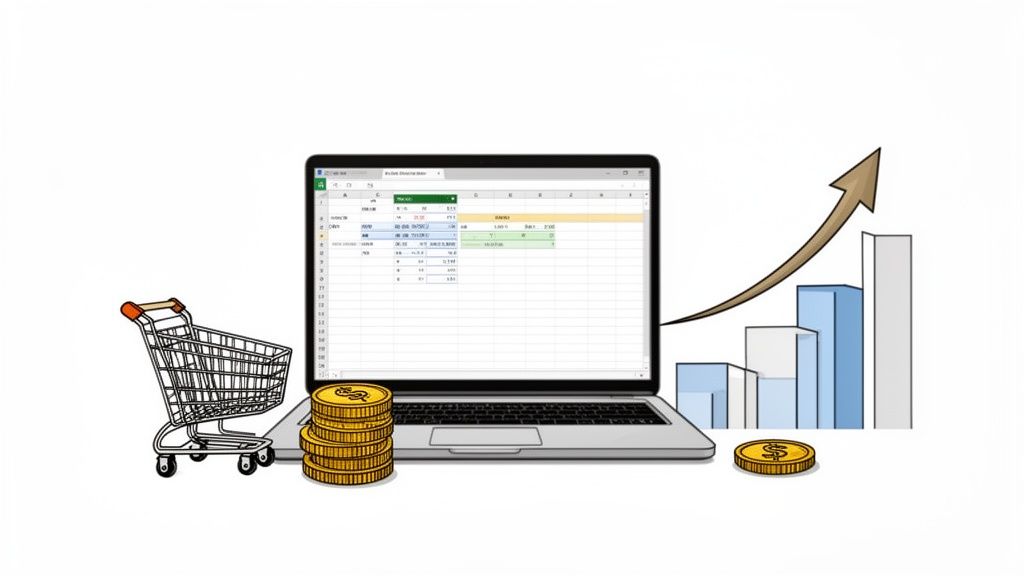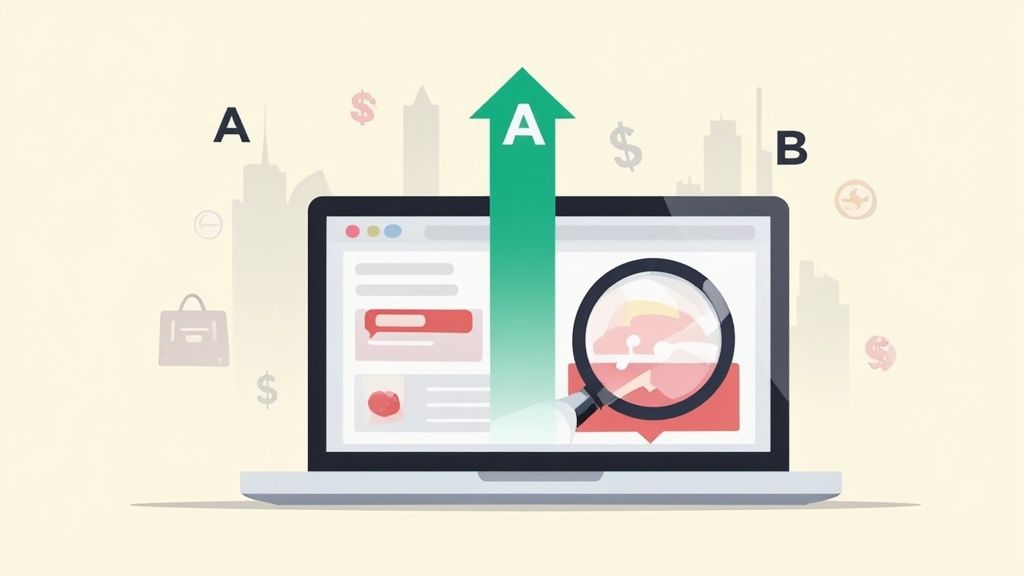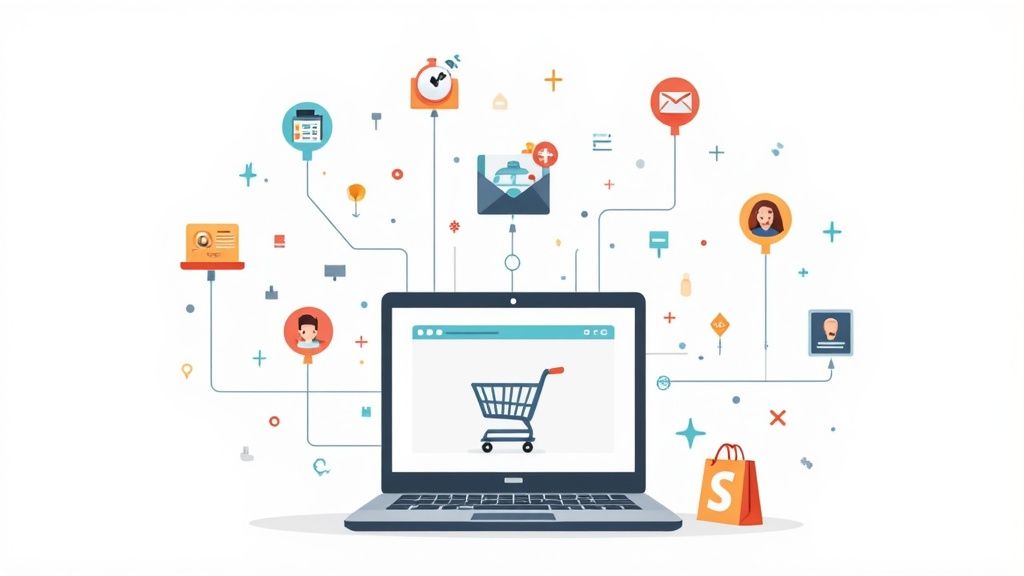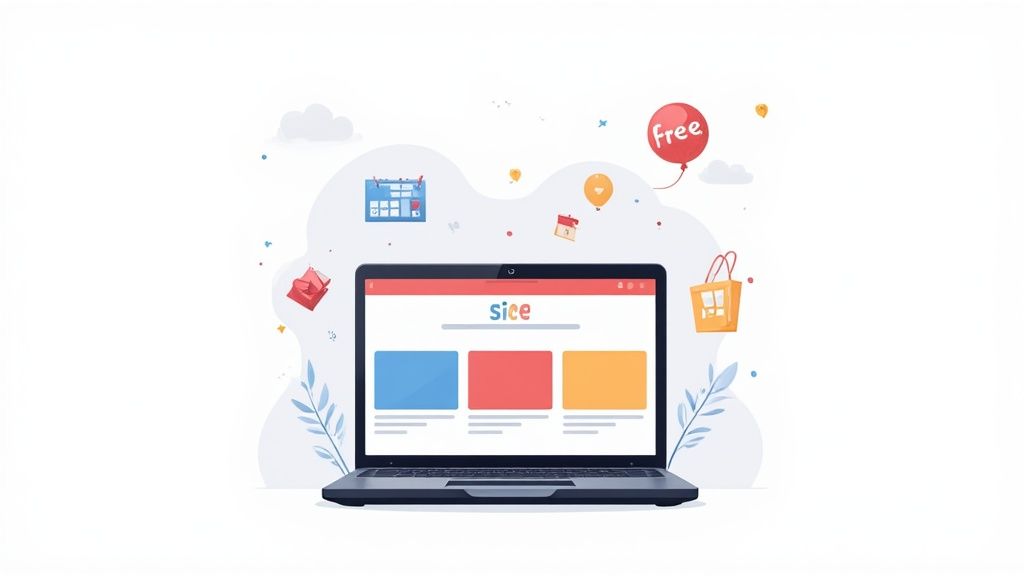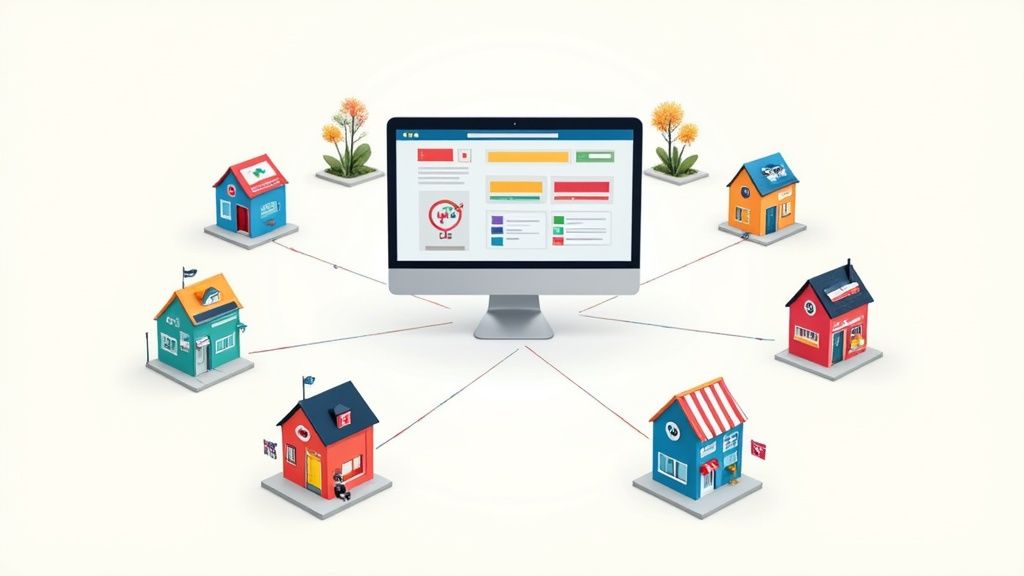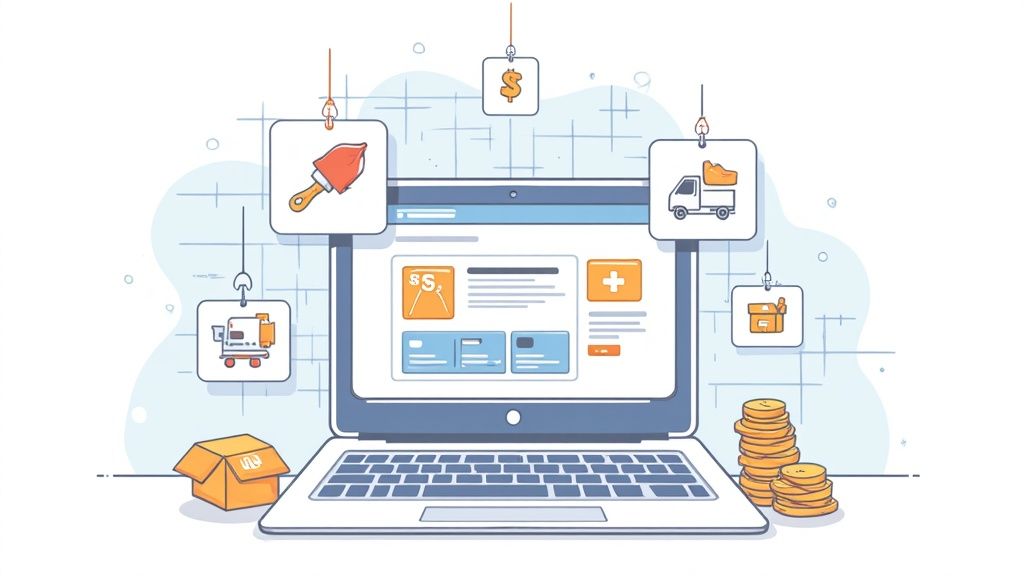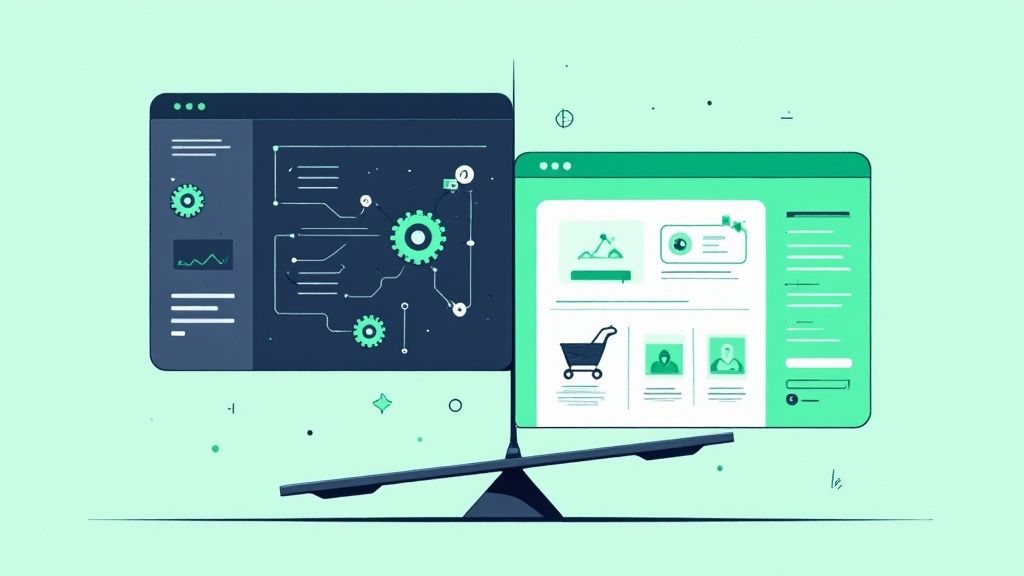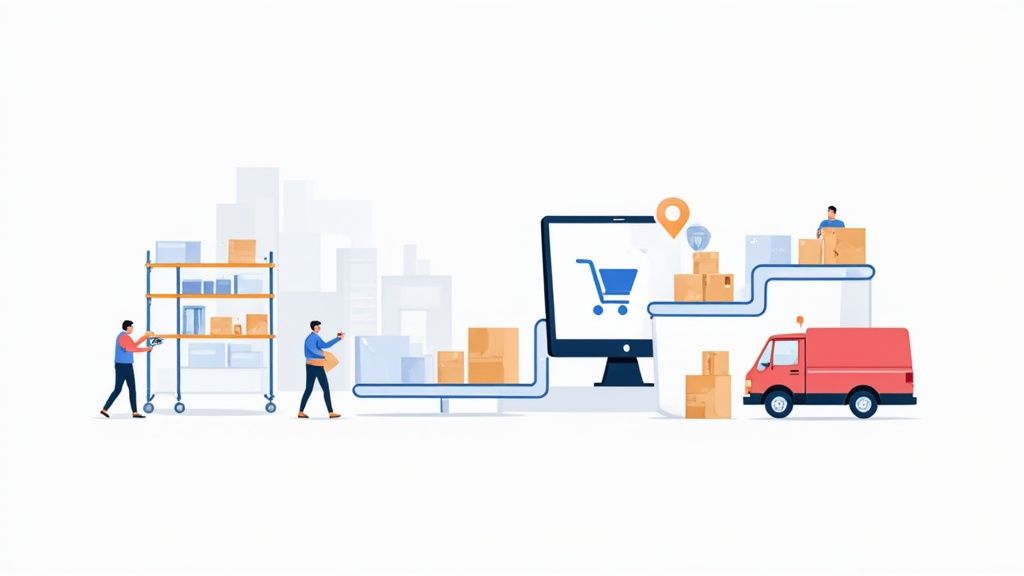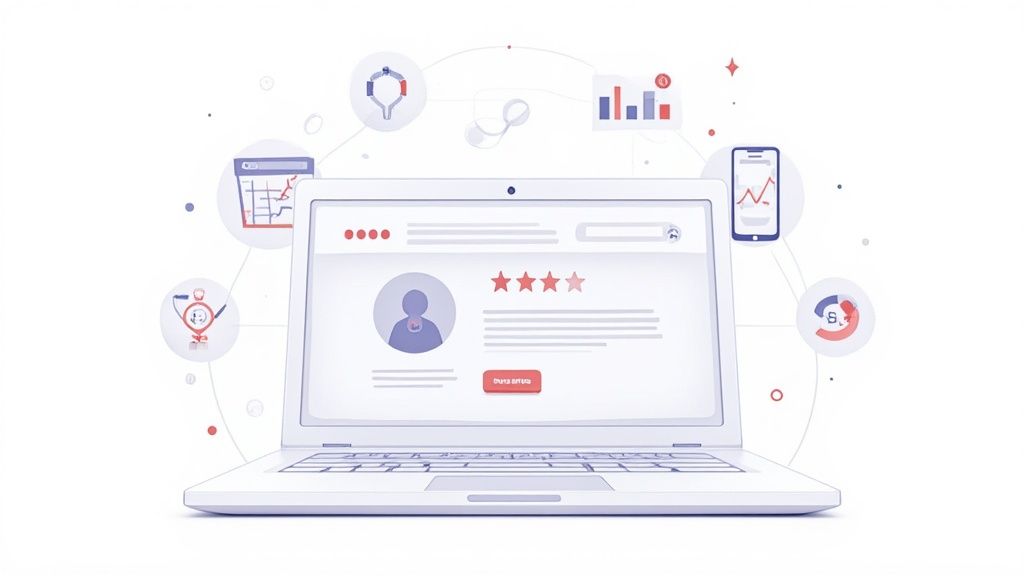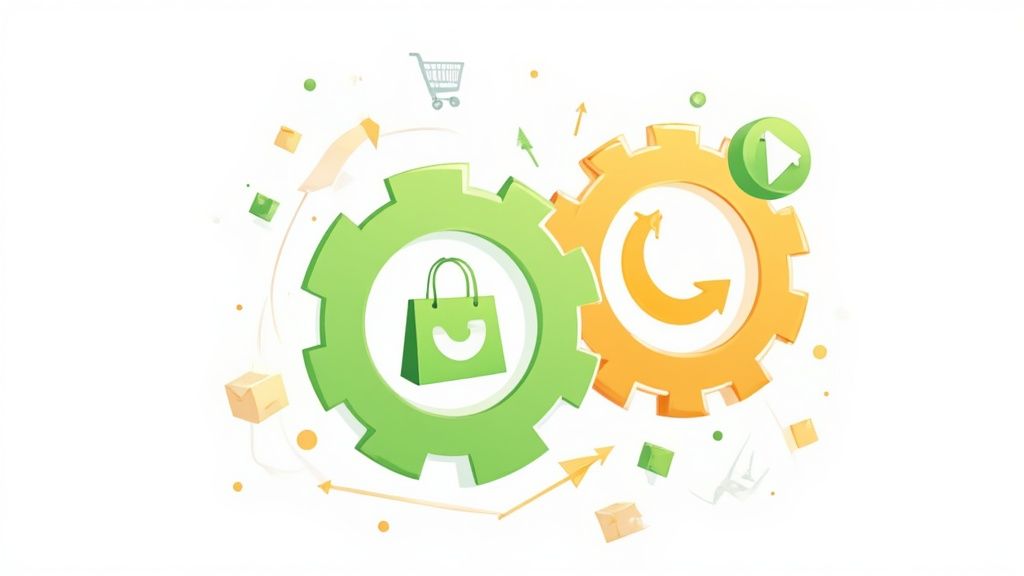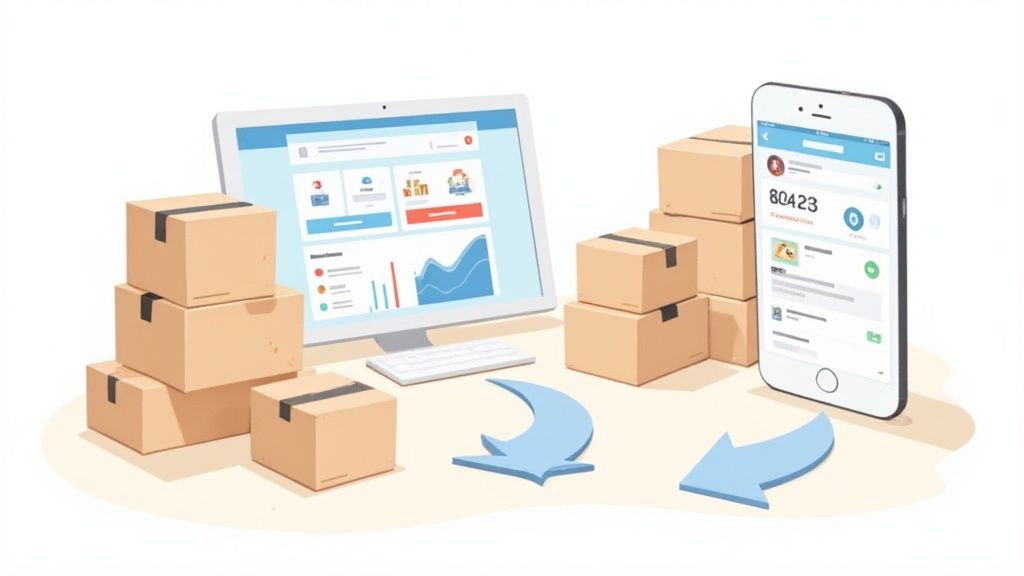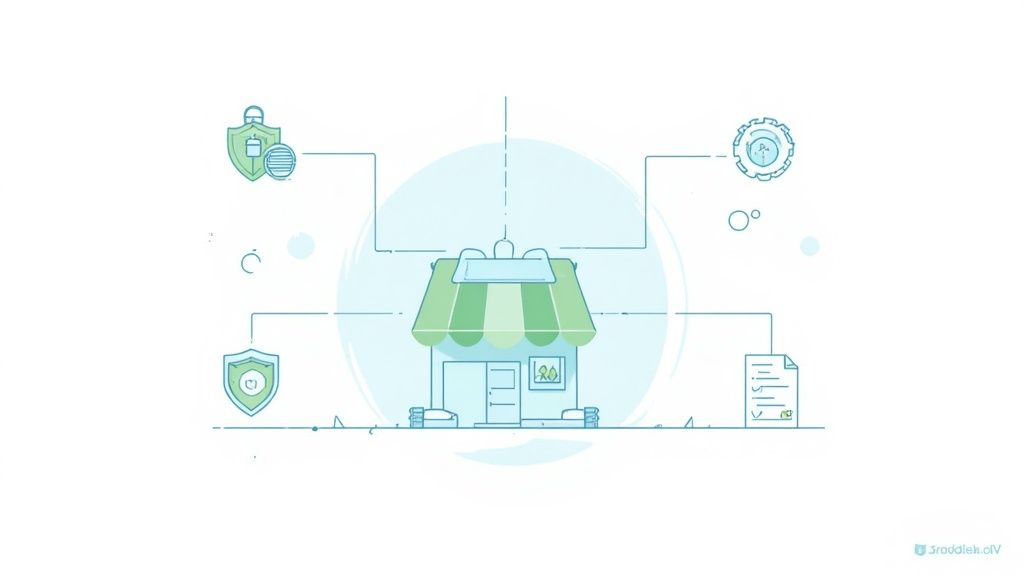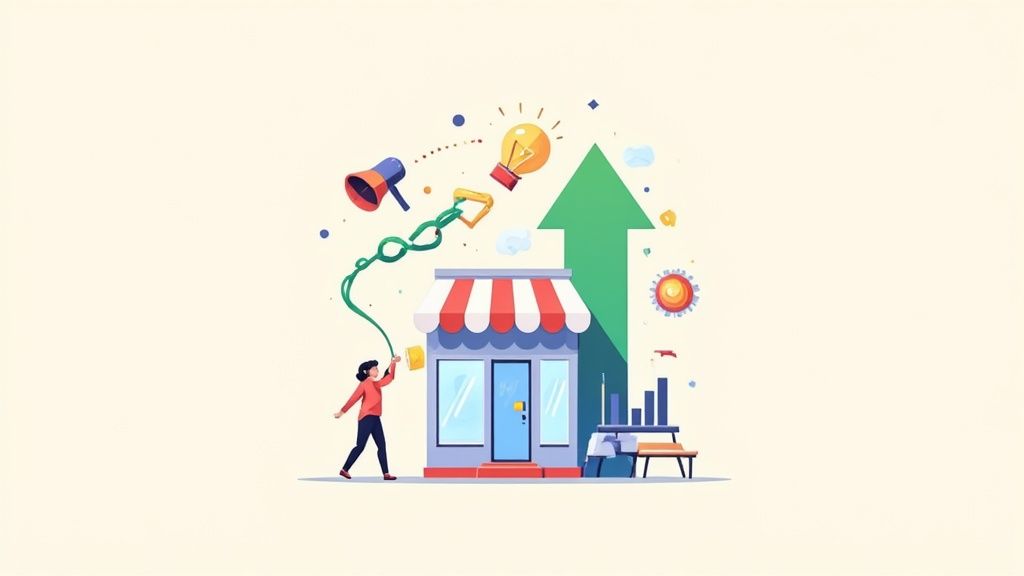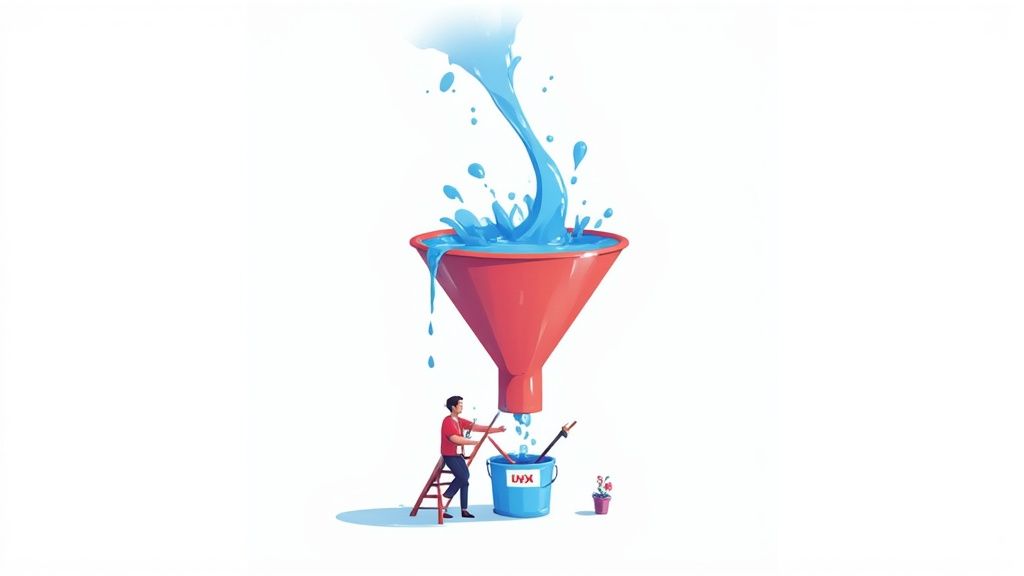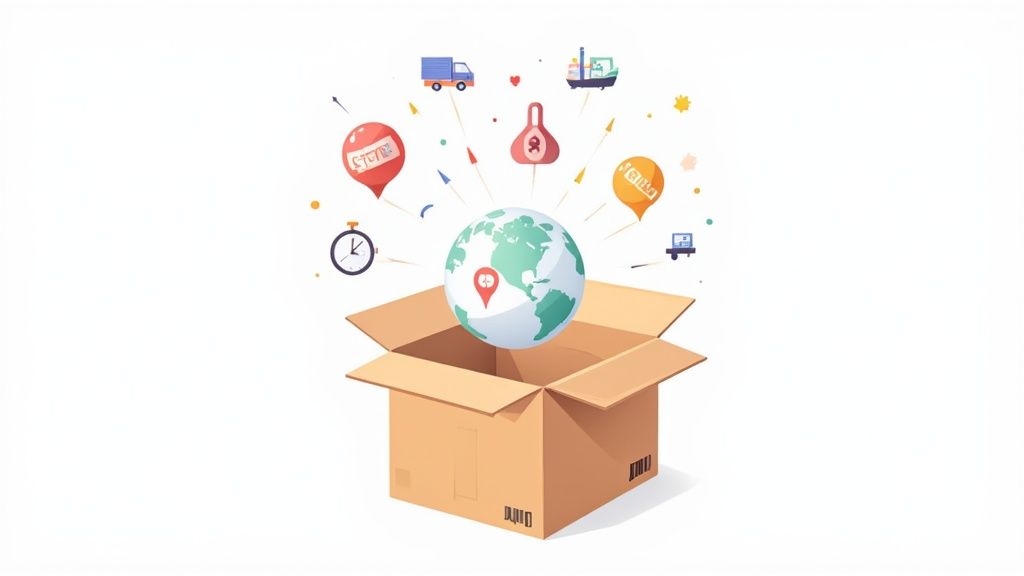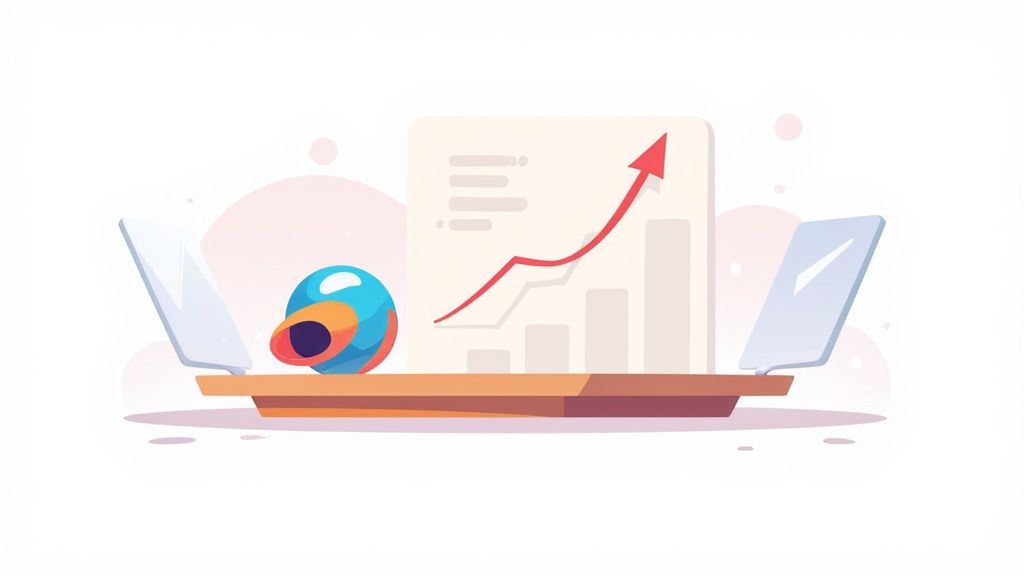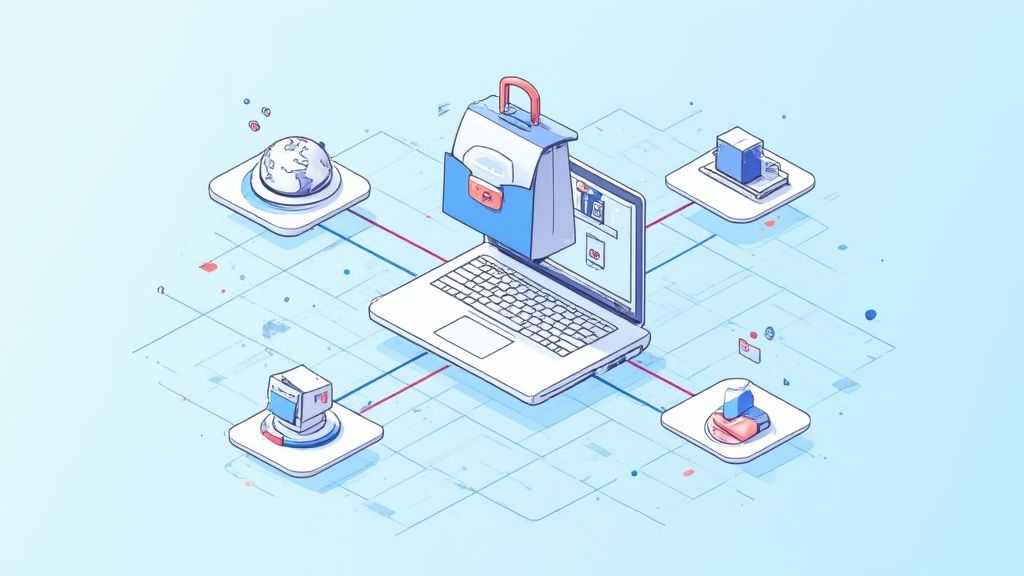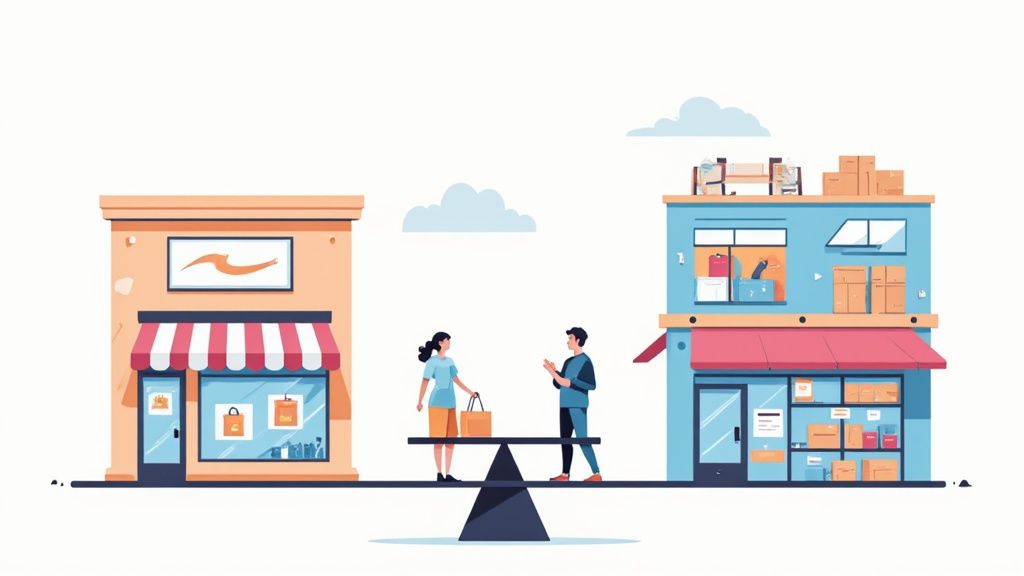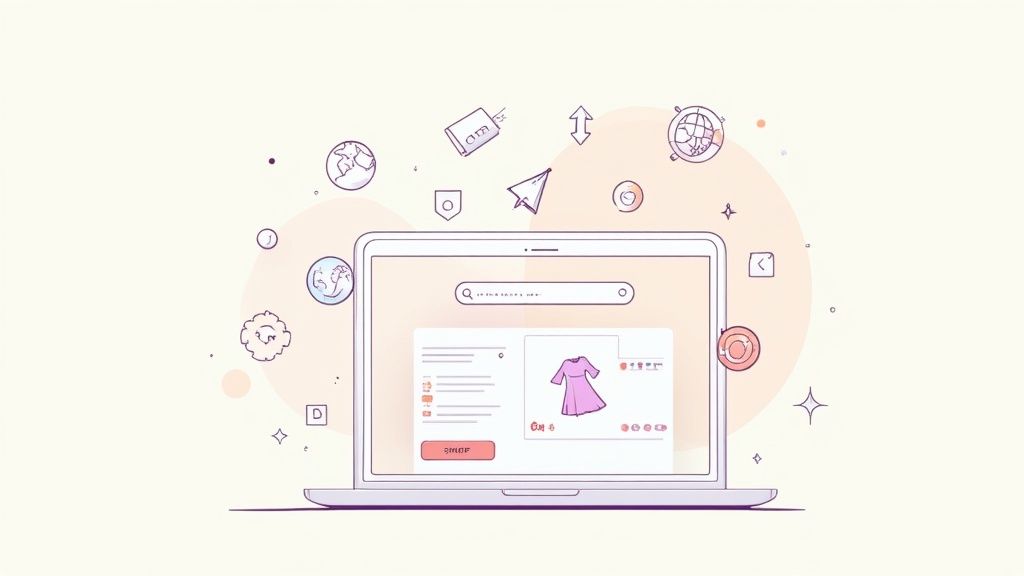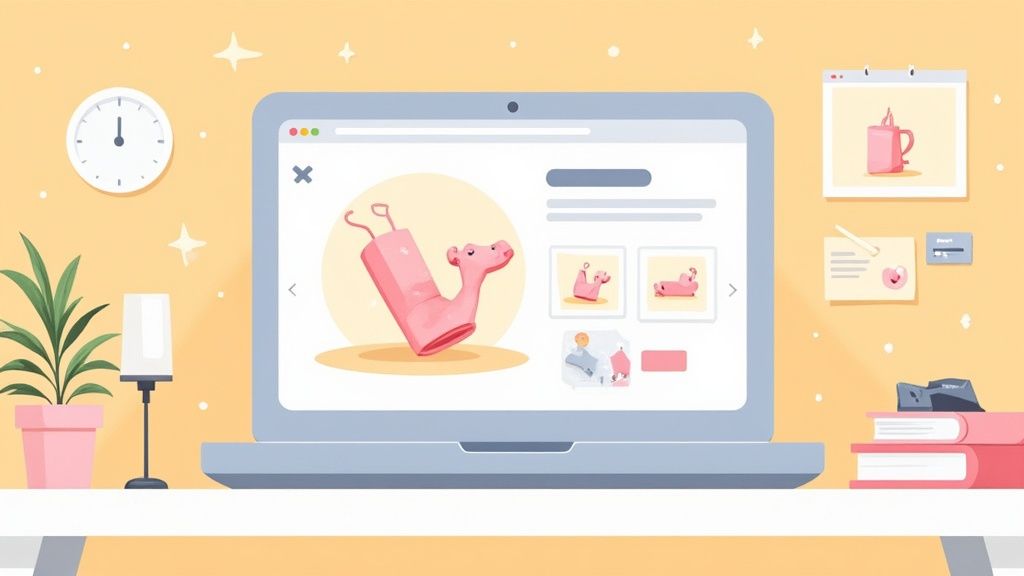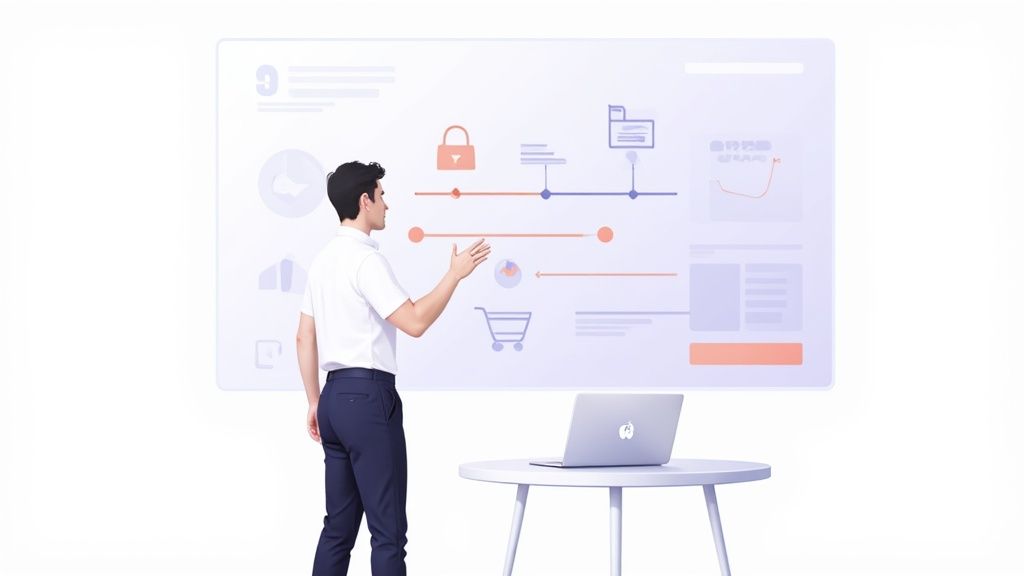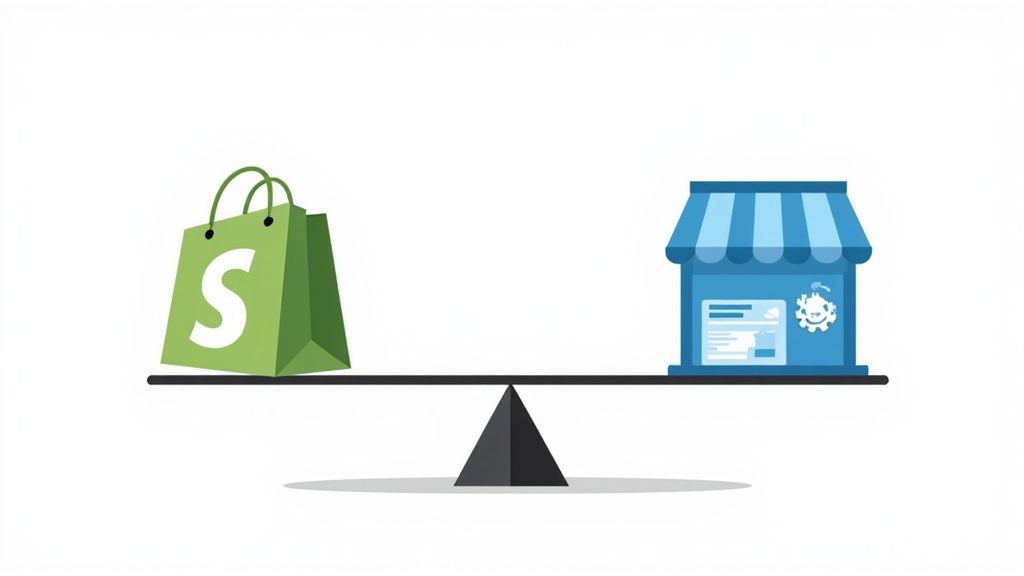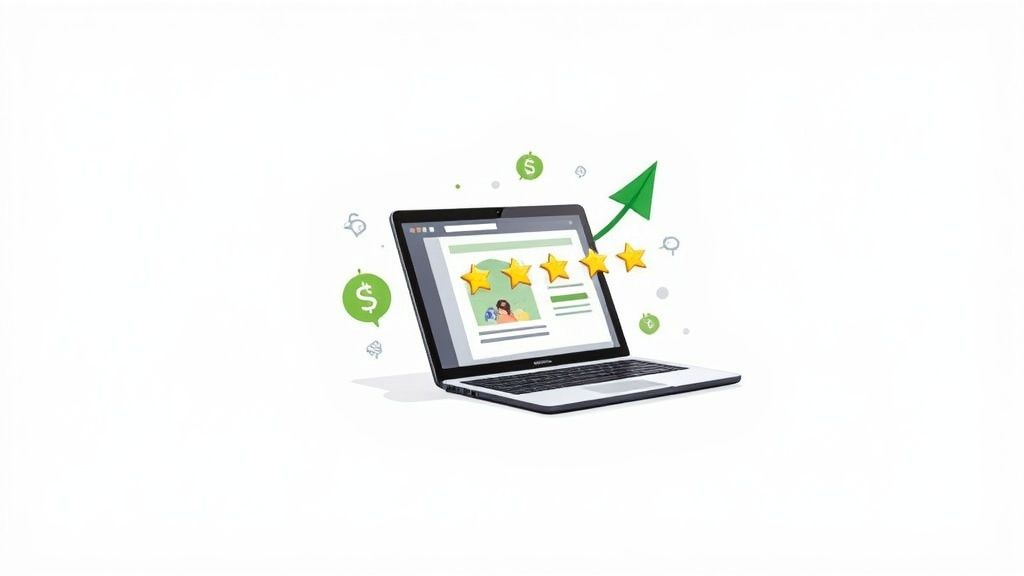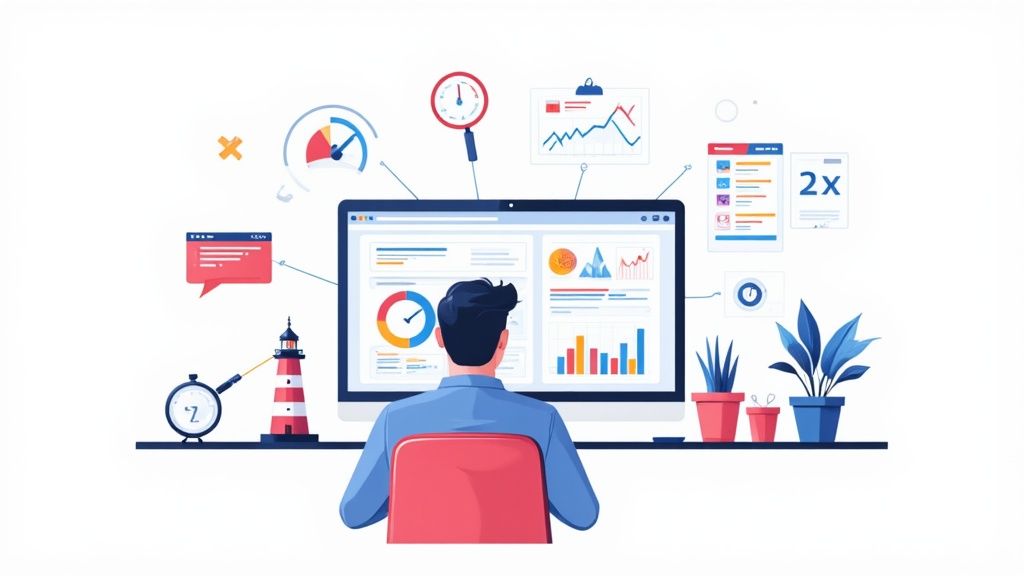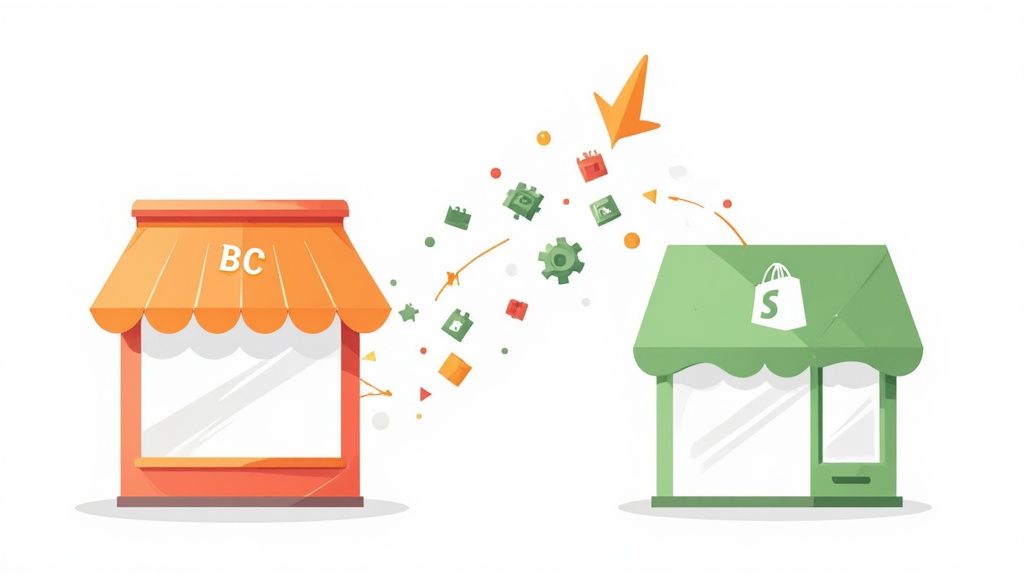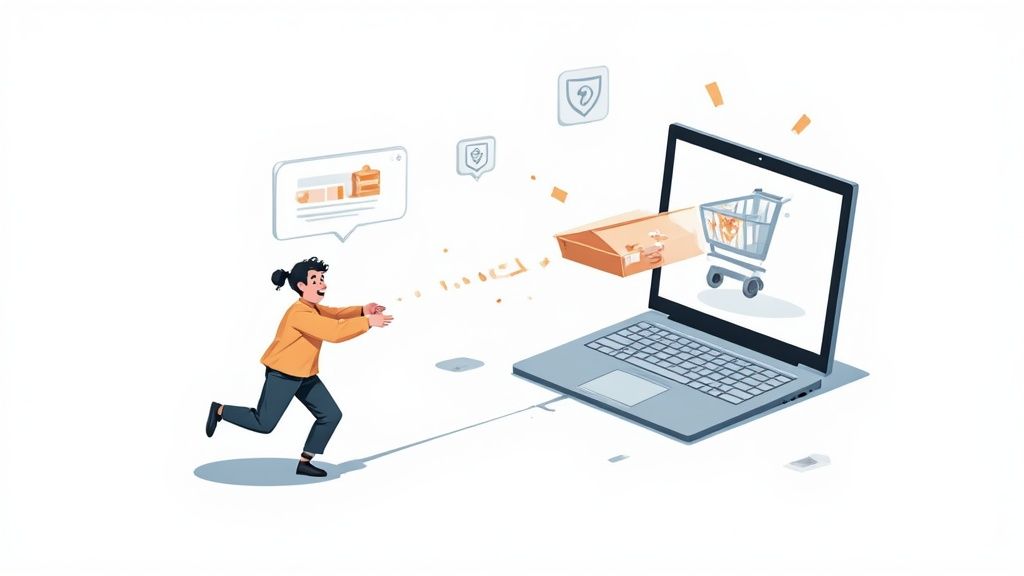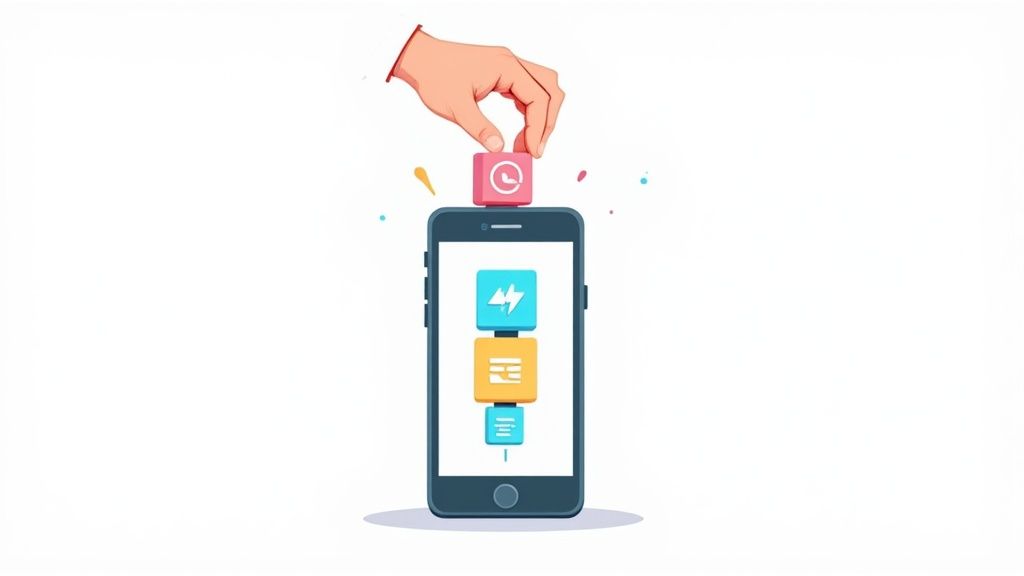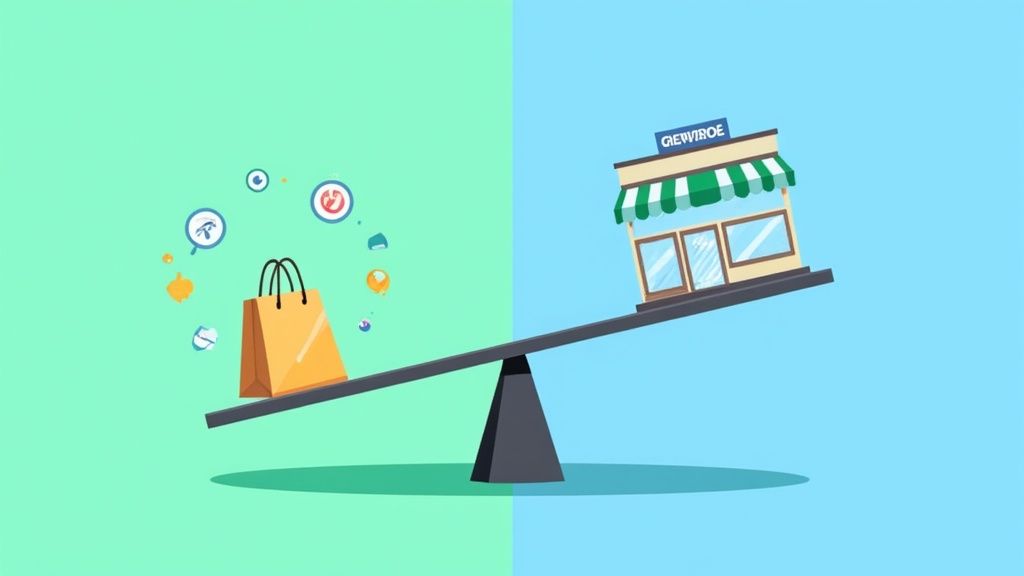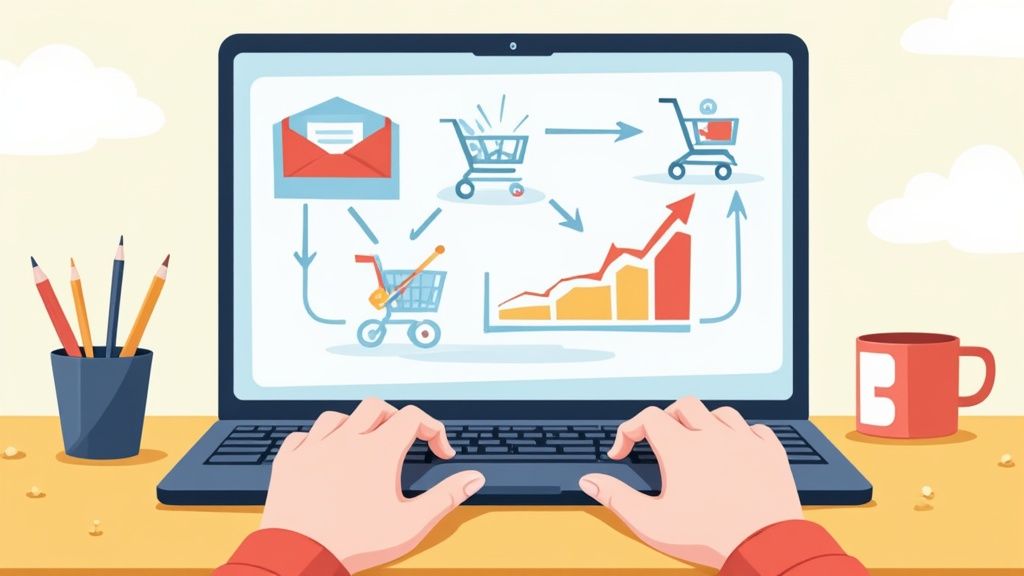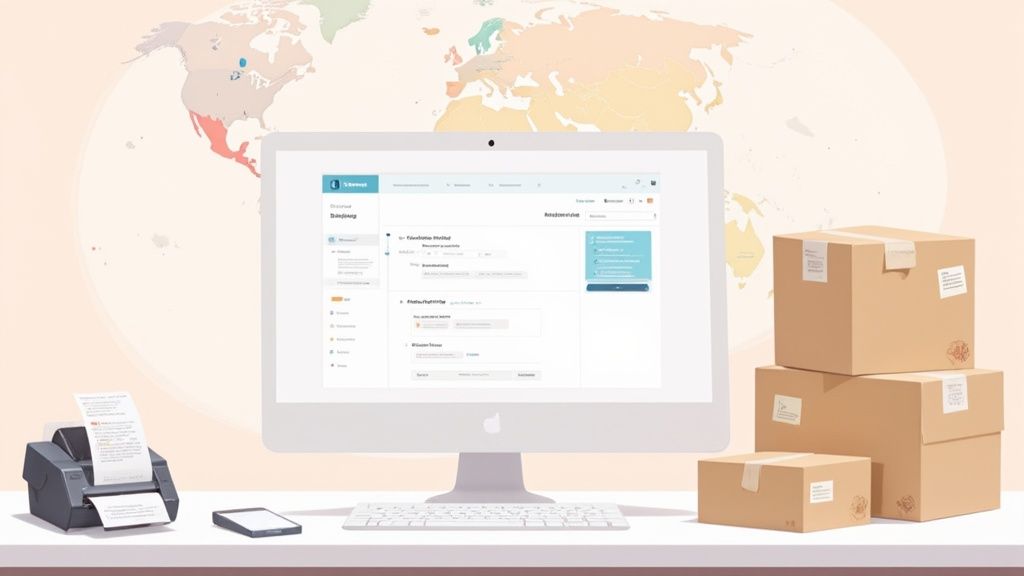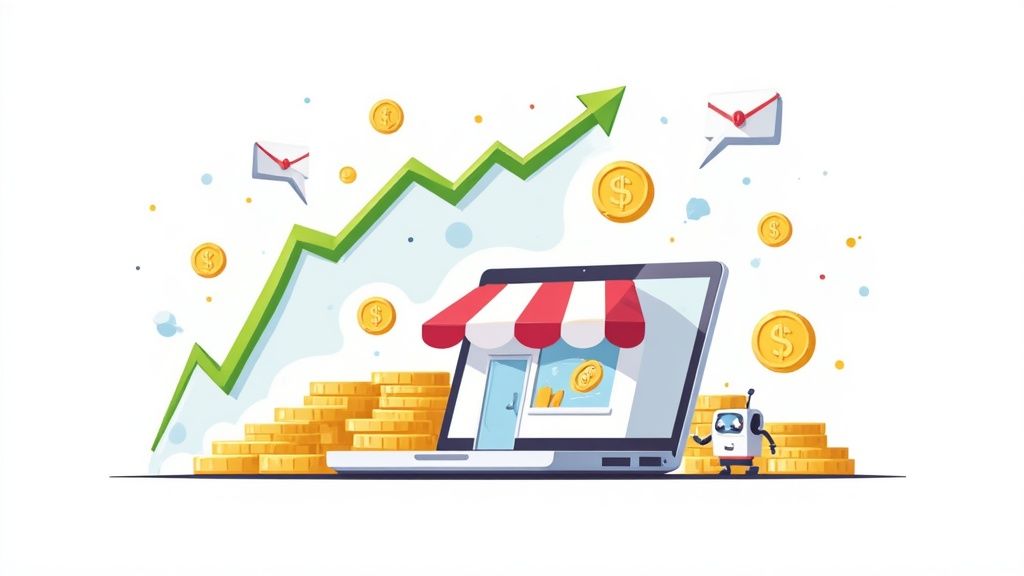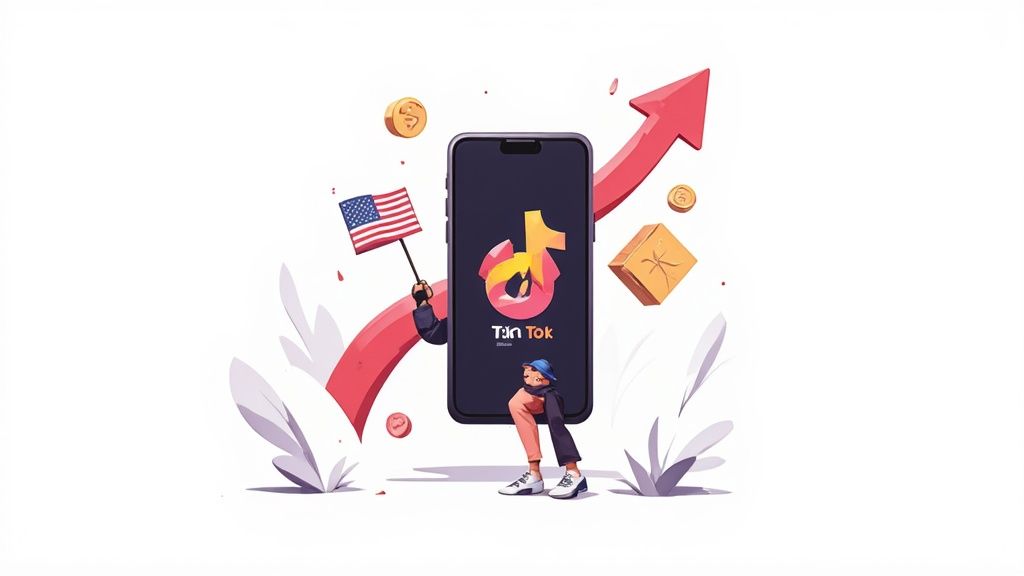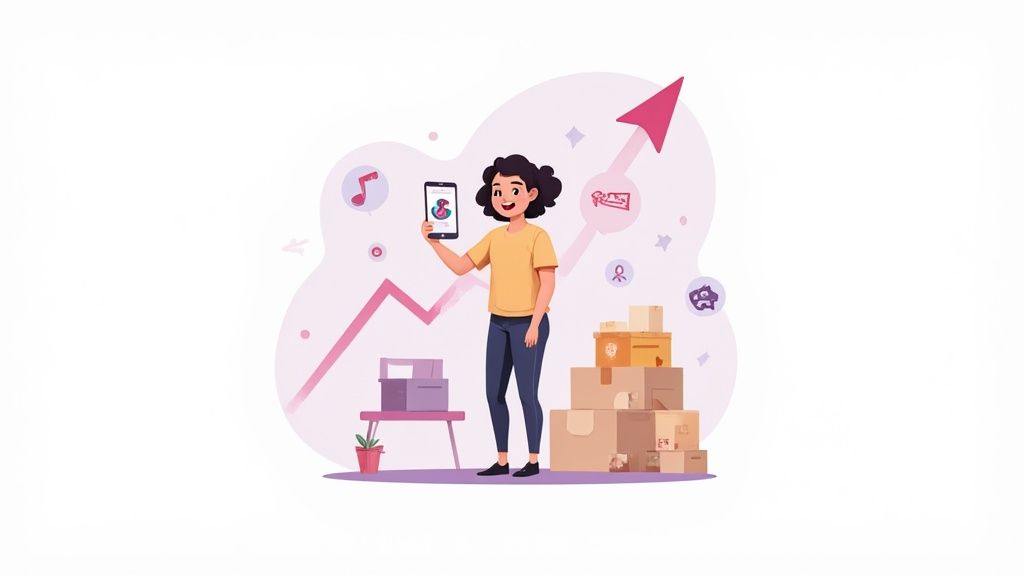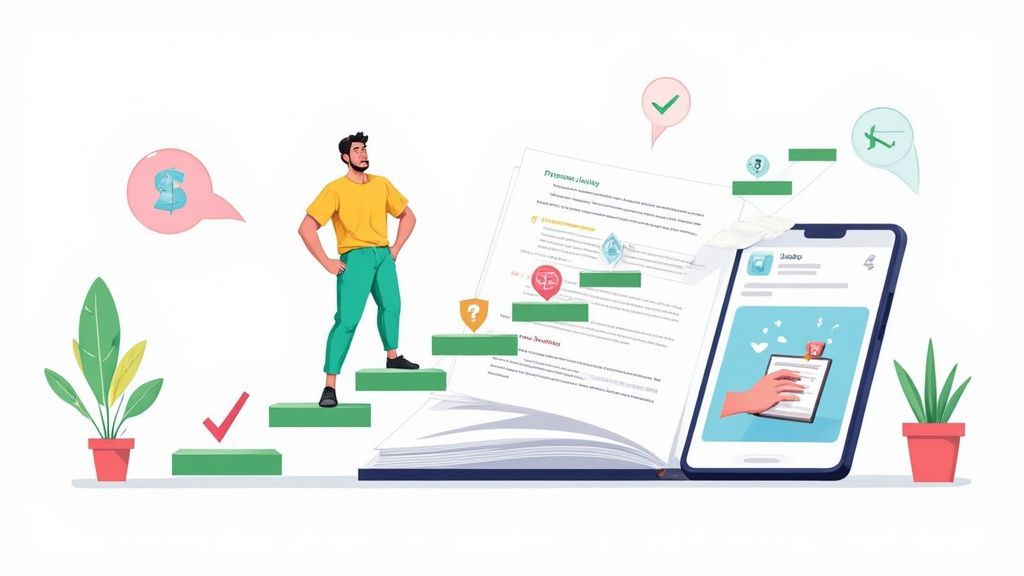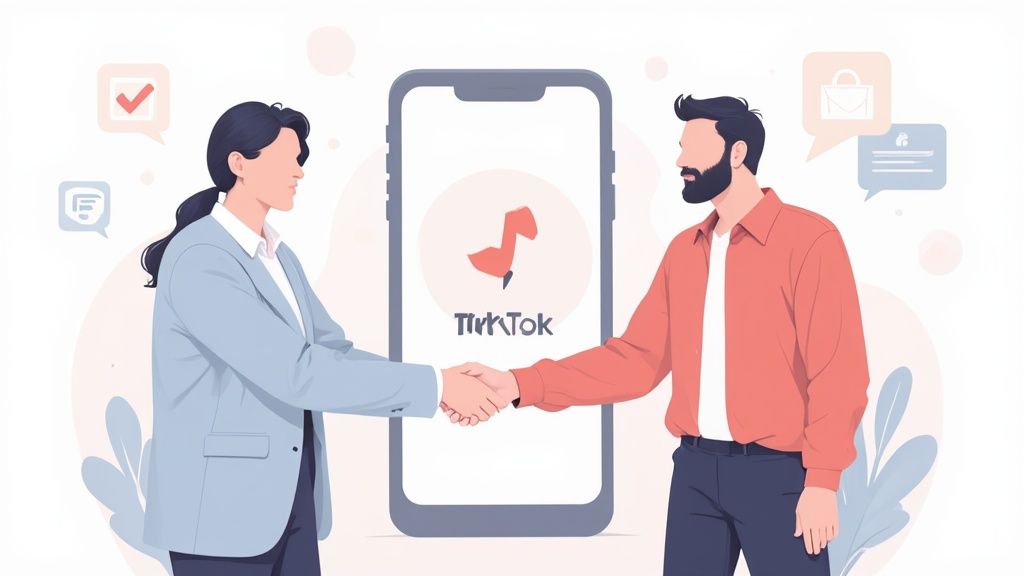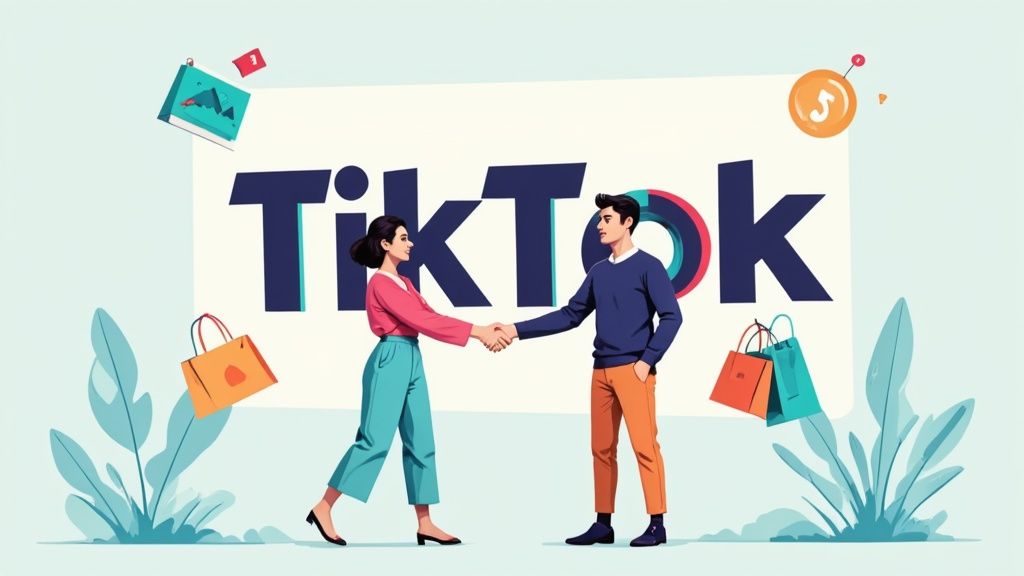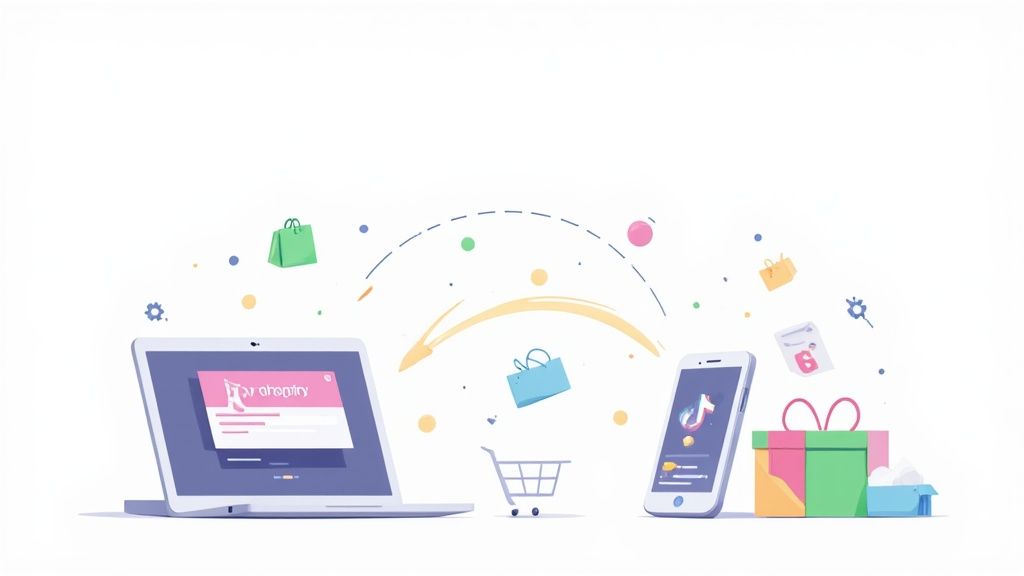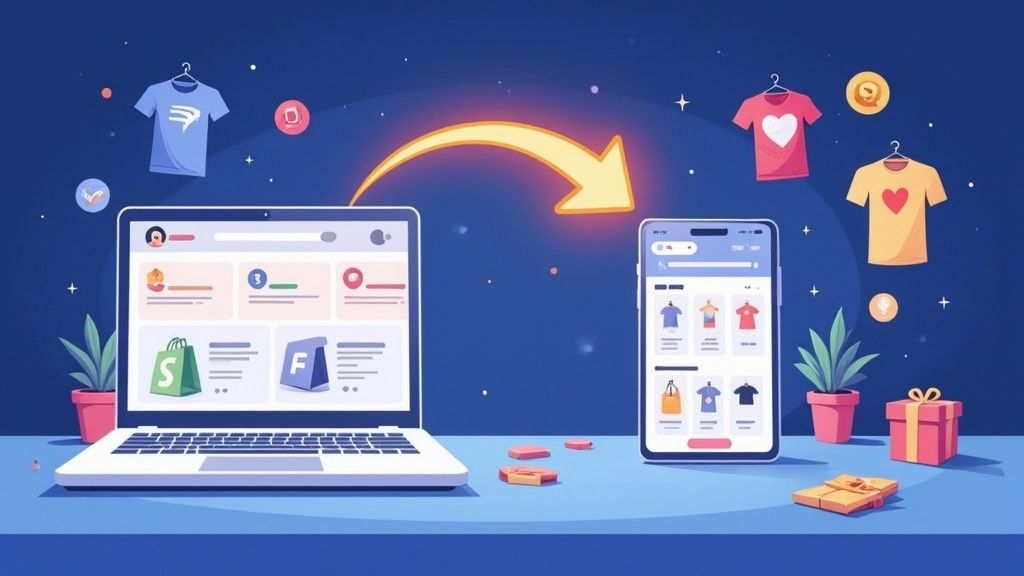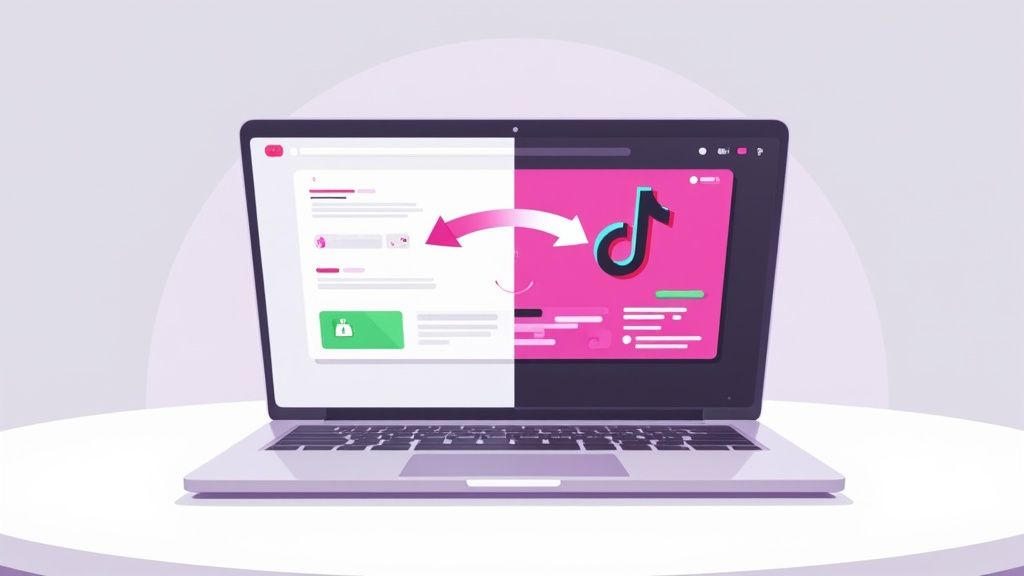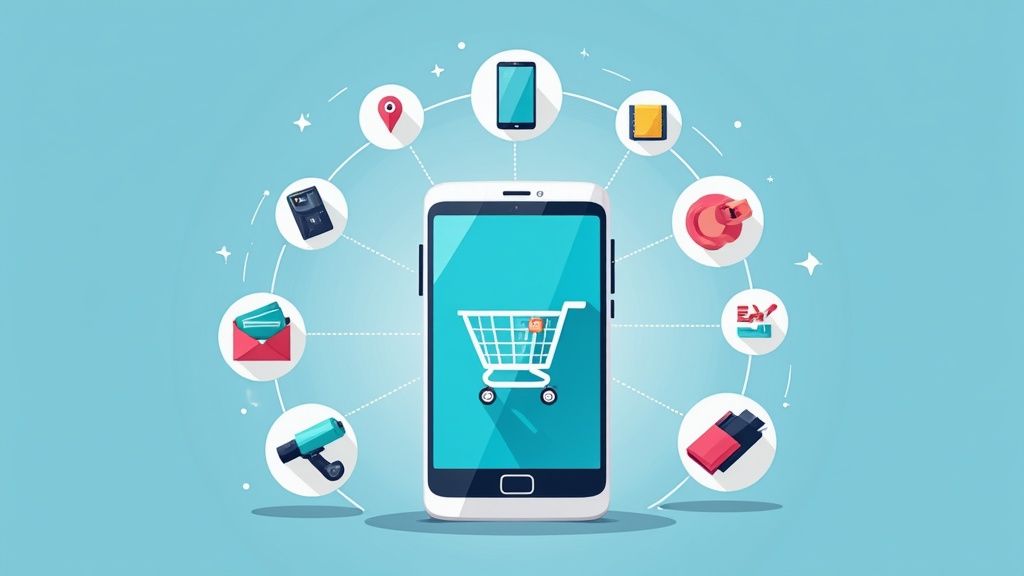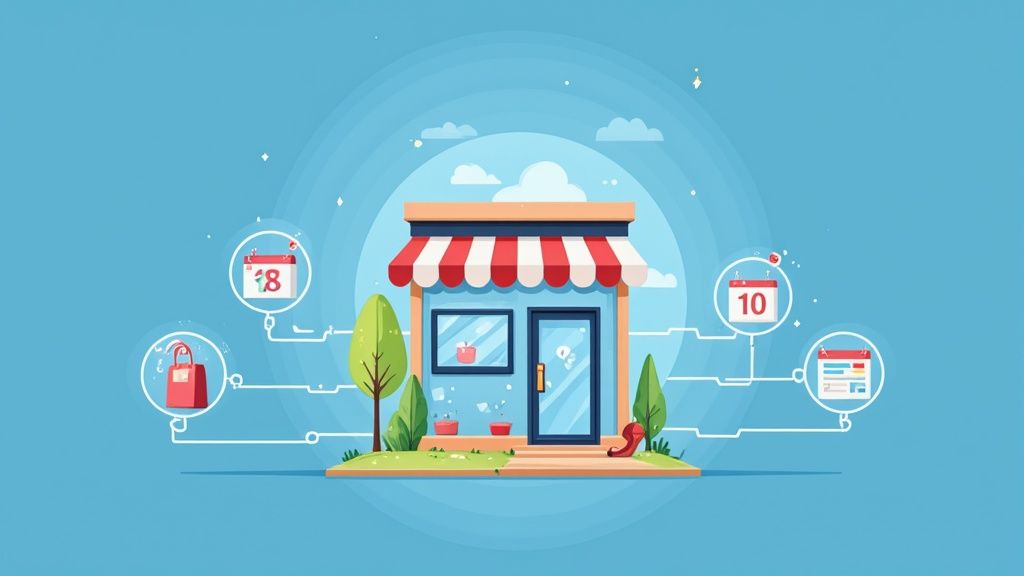
Absolutely, you can manage multiple stores on Shopify. The real question is how you should go about it. For a couple of simple storefronts, juggling separate accounts might be manageable. But if you're serious about scaling and want a centralized, efficient operation, Shopify Plus is really what you’re looking for. It’s built from the ground up to let you run multiple storefronts from a single, unified dashboard.
Why You Might Need Multiple Shopify Stores
When your brand starts hitting its stride, that single, one-size-fits-all store can begin to feel a little cramped. Growth often means you need to create different, more focused experiences for specific audiences. This is where the strategy of managing multiple Shopify stores comes in. It’s not just about slapping up a second brand; it's a smart, calculated move to grab more market share.
Usually, the push for another store comes from a clear growth opportunity. Maybe you're finally ready to take on international markets, or you need a separate, streamlined channel just for your wholesale partners.
Common Scenarios for Expansion
Going global is one of the biggest drivers. If you want to sell effectively to a German audience, for instance, it takes more than just a quick translation of your product pages. You need to fully localize the experience—we're talking currency, payment options, and marketing that actually connects with the local culture. A dedicated .de store makes that possible, building the trust you need to convert shoppers in that region.
Another classic scenario is splitting your retail (B2C) and wholesale (B2B) operations. Your everyday retail customers have completely different needs and buying habits than your wholesale clients. Wholesalers are looking for specific features like:
- Tiered Pricing: Offering better prices based on how much they order.
- Net Terms: Giving trusted partners the ability to pay for their orders later.
- Bulk Ordering: Making it painless to buy in large quantities.
A dedicated B2B store cuts through the complexity of these transactions. It removes all the friction for your most valuable partners while keeping your main retail site clean, simple, and easy to use for individual shoppers.
Experimentation and Niche Markets
What if you have a brilliant, but bold, new product idea you want to test? Launching it on your main store could confuse your loyal customers. This is the perfect time for an experimental store, which acts as a low-risk sandbox. You can check market interest, play with different branding, and get real feedback without messing with the performance of your established online store. It gives you the freedom to innovate without fear.
This kind of strategic expansion is a huge reason why so many fast-growing brands upgrade to Shopify’s enterprise solution. The platform's massive footprint—capturing over 10% of the global e-commerce market and nearly 30% in the United States—shows it has the muscle to support businesses at every stage. You can dig into the numbers yourself by checking out some recent Shopify industry statistics.
Many merchants wonder what the tangible benefits are for juggling more than one store. It often comes down to a few key strategies.
Strategic Reasons for Multiple Shopify Stores
Ultimately, each path is designed to meet a specific customer group right where they are, creating a more relevant and compelling reason for them to buy from you.
Here’s a quick peek at the Shopify Plus platform, which is purpose-built for brands that need to manage these kinds of complex, multi-store operations.

As you can see, Shopify Plus is all about centralized control. It gives you that single backend to manage all your stores, automate workflows across them, and even customize the checkout experience—all things you absolutely need when you're running a growing multi-store ecosystem.
Choosing Your Multi-Store Architecture
This is probably the single most important decision you'll make when you start juggling more than one store. The structure you choose lays the foundation for everything—your daily grind, your ability to grow, and what you’ll spend. You've really got two main paths: running separate, standard Shopify accounts or going all-in with the unified power of Shopify Plus.
If you’re just starting out or have two very distinct brands, managing separate standard accounts is a perfectly fine place to begin. This approach keeps everything in its own sandbox. Each store has its own subscription, its own login, and its own dashboard. It's simple, and it won't hit your wallet hard upfront, but you'll be managing each one completely on its own.
The Independent Storefront Approach
The big draw for separate accounts is how simple and cheap they are to get started. You're basically treating each store as a standalone business.
- Total Separation: Every store is a clean slate. You never have to worry about one store’s apps or settings messing with another.
- Budget-Friendly Start: You dodge the hefty subscription fees of Shopify Plus, which is perfect if you're just testing the waters in a new market or with a new product line.
But here’s the catch: as you scale, this separation can become a real operational nightmare. Constantly switching between logins, updating products one by one on each site, and having no unified view of your customers will chew up your time and resources fast.
The Shopify Plus Integrated Ecosystem
For any brand with serious growth ambitions, especially on a global scale, Shopify Plus is a much more solid and scalable solution. It was literally built to manage multiple stores Shopify from a single command center.
Think of Shopify Plus less as a plan and more as your mission control. It gives you one central dashboard to oversee all your stores, handle staff permissions across the board, and look at consolidated analytics. It’s a game-changer.
The platform's muscle is undisputed, especially when it comes to handling huge sales volumes. During the last Black Friday Cyber Monday weekend, Shopify merchants—many of them on Plus—blew past records, processing a staggering $11.5 billion in sales. If you want to dive deeper, you can check out some recent Shopify statistics and see why over 45,000+ brands trust its enterprise solution.
This decision tree gives you a good visual for when it’s time to spin up a new storefront.

As you can see, the triggers for expanding are usually tied to hitting key business milestones—a certain revenue target, a new product category launch, or breaking into a new country.
One of the killer features of Plus is expansion stores. For a set fee, you can clone your main store to create up to nine more storefronts. This is an absolute lifesaver for localization. You can create customized experiences for different regions with their own domains, currencies, and languages, all while managing them from your single organization account.
If you're already in the thick of it with multiple storefronts, our guide on Shopify's multiple storefronts capabilities will be incredibly useful. Ultimately, your choice comes down to your long-term vision: do you want to start lean with separate accounts, or are you ready to invest in a unified platform that's built to scale with you?
Streamlining Your Inventory and Product Data

Let's talk about the number one place where multi-store brands get tripped up: inventory management. It’s a classic operational headache. A customer buys the last medium T-shirt from your US store, but if your UK and Canadian sites don't know about it instantly, you're heading straight for overselling and some very unhappy customers.
This is where the concept of a "single source of truth" isn't just jargon—it's your lifeline. The goal is to have one central hub where all product data lives. Every stock count, every product description, every image, and every price is managed from one place and then pushed out to all your storefronts. Without this, you're just creating chaos for your team and a messy, inconsistent experience for shoppers.
If you’re just starting out, maybe with only two stores and a trickle of orders, you might be able to get by with Shopify’s native Locations feature. You can assign inventory to different warehouses, which can act as proxies for your separate stores. But be warned: this is a manual process and it will quickly become a bottleneck as you grow.
Choosing the Right Management Tools
Once you've outgrown spreadsheets and manual updates, it's time to bring in the heavy hitters. This is where dedicated tools like an Inventory Management System (IMS) and a Product Information Management (PIM) system become non-negotiable for running multiple Shopify stores well.
Inventory Management Systems (IMS)
An IMS is all about the numbers—how many units you have and where they are. Its sole job is to automate stock level updates across every place you sell.
Think about it:
- A tool like Katana or Cin7 plugs into all of your Shopify instances.
- When a product sells on your direct-to-consumer site, the inventory is immediately synced with your B2B wholesale portal.
- This simple, automated action is what stops you from accidentally selling the same popular item twice.
Product Information Management (PIM)
While an IMS handles the quantity, a PIM handles the quality of your product data. A PIM is your master library for all the descriptive stuff: product titles, detailed descriptions, technical specs, and high-res images.
For a brand selling, say, high-performance outerwear, ensuring the waterproofing specs are identical on your US and European sites isn't just about consistency—it's about credibility. A PIM like Salsify or Akeneo lets you manage that core data centrally and then push it out to each store, guaranteeing every customer sees the right information.
By creating a single source of truth, you're not just organizing data; you're building a foundation for scale. This ensures that as you add more stores, your operational complexity doesn't multiply along with them, maintaining a seamless experience for every customer.
Inventory Syncing Solutions for Multiple Stores
Deciding between Shopify's built-in features and a specialized third-party app is a common crossroads for growing brands. The native tools are great for getting started, but dedicated apps are built for scale and complexity. Here’s a quick breakdown to help you choose the right path.
Ultimately, while the initial cost of a third-party app might seem like an extra expense, the time saved and errors prevented almost always deliver a massive return on investment as your business grows.
Real-World Scenarios and How to Solve Them
Let's look at a couple of common multi-store challenges.
First, product bundles. You sell a "Skincare Starter Kit" that includes a cleanser, a moisturizer, and a serum. An IMS is smart enough to track the inventory of the individual components. When one kit sells, it automatically deducts 1 unit from each of the 3 base products across all your stores. No manual math, no risk of selling a kit you can't fulfill.
Next up, regional variations. Your signature "Winter Parka" might be called the "Alpine Explorer" in Canada to better fit the market. A PIM lets you manage the core product information (SKU, materials, etc.) while creating localized "views" for each storefront. You can easily tweak the name, marketing copy, and even imagery for each region without creating messy duplicate products. This kind of structured approach is what separates thriving multi-store empires from businesses tangled in operational knots.
Unifying Your Brand and Customer Experience

Even though your stores might serve different regions or niche audiences, they should all feel like they’re part of the same family. It’s that consistent brand experience that builds real trust and recognition. When a customer from your US store lands on your Canadian site, the vibe should be instantly familiar.
This doesn't mean your stores have to be carbon copies—in fact, they shouldn't be. Smart localization is where the magic happens. A killer strategy for managing multiple stores Shopify is to develop a master theme. This is your brand’s bedrock, containing all the non-negotiables: your logo, color palette, fonts, and core page layouts.
With that master theme as your foundation, you can then spin up "child" versions for each individual store. This setup is brilliant because it lets you make targeted tweaks without watering down your brand. For instance, you could be promoting winter coats on your Norwegian homepage in October while your Australian store is all about swimwear. The experience feels local and relevant, but the brand DNA remains unmistakably yours.
Creating a Unified View of Your Customer
Now, here’s where things can get a little messy with a multi-store setup. What happens when a loyal customer buys from both your US and UK stores? If your systems aren't connected, they look like two completely different people. You can't see their true lifetime value, which totally kneecaps your ability to deliver personalized marketing or standout service.
It’s a common scenario: a customer has an account on your .com store but checks out as a guest on your .ca site. To your backend, these are two separate shoppers. That's a huge missed opportunity to reward their loyalty or understand their full buying journey.
The answer is to centralize your customer data. This is exactly what tools like a Customer Data Platform (CDP) are built for. They pull in data from all your different storefronts and stitch customer profiles together using common details like an email address.
By unifying customer data, you transform fragmented interactions into a single, cohesive customer journey. This enables you to see a customer’s complete order history, no matter which storefront they used, unlocking powerful opportunities for personalization and support.
Practical Strategies for Cohesion
Getting that unified feeling right is a mix of smart branding and the right tech stack. Here are a few practical ways to make your multi-store operation feel like one connected brand to every shopper:
- Shared Navigation Elements: Keep your main navigation menu (like Shop, About Us, Contact) the same across all stores. It creates a predictable and comfortable user experience.
- Centralized Customer Support: Use a help desk tool like Gorgias or Zendesk that pulls in tickets from all your Shopify stores. This gives your support agents a single view of a customer's history, allowing for truly seamless service.
- Cross-Store Promotions (with care): While your pricing and products might vary, you can still run cohesive brand campaigns. A global "Summer Sale," for example, can be pushed on all sites, with the specific deals and messaging tweaked for each market.
- Consistent Email and Social Branding: Your off-site presence is just as important. Make sure your email templates and social media profiles all share the same visual identity and tone of voice. This reinforces your brand everywhere your customers interact with it.
So you've got multiple Shopify stores up and running. Great. Now comes the real challenge: marketing them without having them trip over each other.
When you're juggling marketing and SEO for several storefronts, things get complicated fast. If you aren't careful, your stores can start competing in search results. This is a classic problem called brand keyword cannibalization. Imagine your US and UK stores both trying to rank for "best [your brand] jacket." Google gets confused, your authority gets split, and neither site performs as well as it could.
The trick is to send clear signals to search engines that your stores are related, not just lazy copies. You need to build digital footprints that are distinct but clearly part of the same family. A solid grasp of understanding search engine indexing is non-negotiable here; you have to know how platforms find and make sense of your content to guide them correctly.
Avoiding SEO Pitfalls
Your first and most critical technical task, especially if you're selling internationally, is to get hreflang tags in place. Think of these as little signposts in your site's code. They tell Google which language and regional URL to serve up to a specific user. For instance, a tag on your American product page effectively says, "Hey Google, for anyone searching from the UK, show them this URL instead."
This one move is your best defense against duplicate content penalties. It clarifies that your regional sites are alternates, not duplicates, and makes sure the right customer gets to the right store.
Beyond the technical side, you need a smart content strategy. Don't just copy and paste product descriptions. Localize them. Even small tweaks to reflect local slang, currency, and cultural touchstones can make a huge impact on both your customers and the search engine crawlers.
This isn't just about dodging penalties; it's about creating a legitimately better experience. When you nail your hreflang tags and localize your content, you're helping search engines serve the most relevant page to the right person. That directly boosts engagement and, ultimately, your conversion rates.
Tailoring Marketing Campaigns
Your marketing messages need the same localized touch. Your brand's core voice should stay consistent, but the actual campaigns and promotions must resonate with each market. A "Back to School" sale might kill it in North America in August, but it's going to land with a thud in Australia, where the school year follows a completely different calendar.
This applies directly to your paid advertising, too. Run separate ad campaigns for each store. Target geographically relevant keywords and write ad copy that speaks to the local audience. This stops you from bidding against yourself and inflating your ad costs.
A focused marketing approach is essential in today's crowded market. Shopify is home to a staggering 4.82 million active stores around the world. Interestingly, data reveals that most of these stores operate with lean inventories; hundreds of thousands list fewer than 25 products. This trend towards niche specialization just underscores how vital precise targeting is if you want to stand out.
By building out distinct marketing strategies and providing clear technical signals for each store, you create a powerful, unified presence where all your storefronts work together, not against each other.
When you start scaling your brand with a multiple stores Shopify setup, you're bound to have questions. Getting ahead of these common concerns can save you from major headaches down the road and keep your operations humming.
Let's dive into some of the most frequent questions we hear from merchants.
Can I Use One Domain for All My Stores?
One of the first things people ask is about domains. Can you just use one domain for all your different stores?
The short answer is no. Each Shopify store needs its own unique primary domain to function correctly.
But don't worry, this doesn't mean your branding has to feel fragmented. The standard and most effective practice is to use subdomains of your main brand domain. It’s a clean way to create a sense of unity across your entire ecosystem.
Here’s a real-world example of how that looks:
- Your main US store: yourbrand.com
- Your Canadian store: ca.yourbrand.com
- Your wholesale portal: wholesale.yourbrand.com
This structure immediately signals to customers and search engines that all these storefronts belong to the same official brand family, which is a huge plus for building trust.
How Do I Track Analytics Across Different Stores?
Another big one: how on earth do you track performance when your data is split across multiple dashboards? If your analytics are a mess, you're flying blind.
The key is to avoid looking at each store in total isolation. For a complete picture, a centralized analytics platform like Google Analytics 4 is essential. You can set up distinct properties for each store, then create a "roll-up" property to see the aggregated data. This gives you that crucial, top-level view of your entire eCommerce operation.
If you’re on Shopify Plus, you have an advantage. The Organization-level dashboard provides a fantastic high-level overview of key metrics across all your storefronts. It makes spotting trends and making quick, informed decisions so much easier.
How Should We Handle Customer Service?
Finally, what about customer support? A shopper doesn't care which specific storefront they bought from—they just know they're a customer of your brand. A disjointed support experience can burn through the trust you've worked so hard to build.
Using a centralized help desk platform is the gold standard here. Tools like Gorgias or Zendesk are built for this. They integrate with all your Shopify stores, pulling customer tickets and order histories into a single, unified dashboard. Your support team gets a complete view, allowing them to provide fast, informed service, no matter which store the query came from.
For a deeper dive into the operational side of things, check out our complete guide on how to manage multiple Shopify stores for more tactical advice.
Honestly, running several stores feels a lot like juggling multiple big projects. The principles from project management are surprisingly relevant here; solid strategies for managing multiple projects almost always boil down to centralization and clear communication—the same things that are vital for multi-store success.
Thinking about scaling your brand across multiple storefronts but dreading the operational headaches? The team at ECORN specializes in Shopify Plus development and strategic consulting. We build efficient, high-growth eCommerce ecosystems. Discover our flexible subscription packages and let's expand your brand with confidence.









